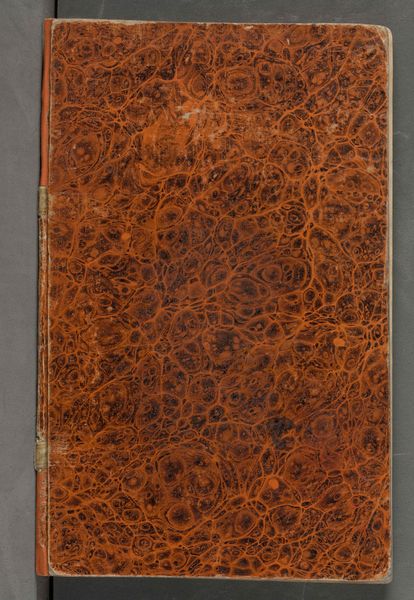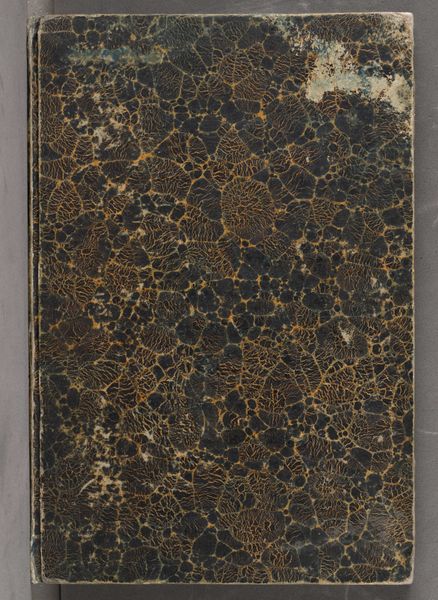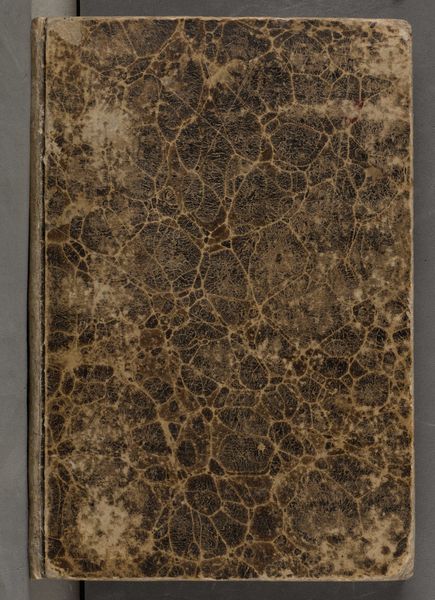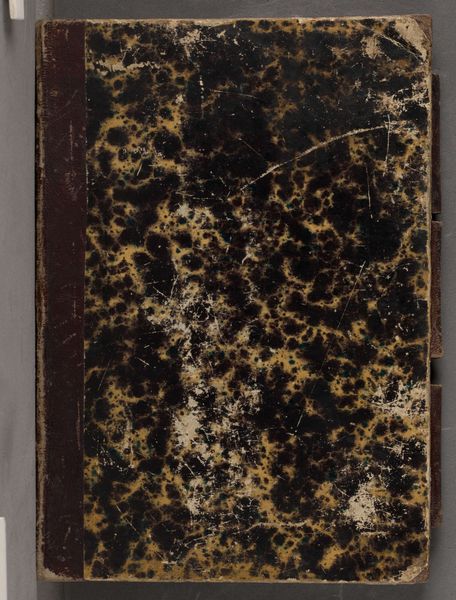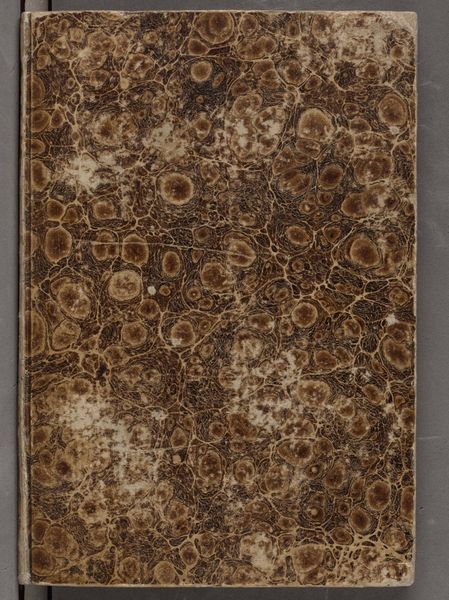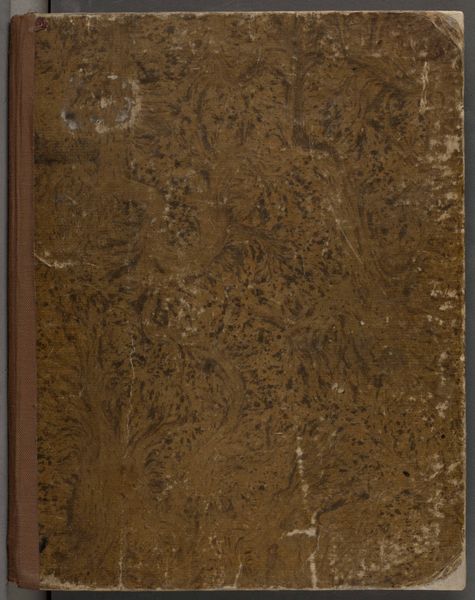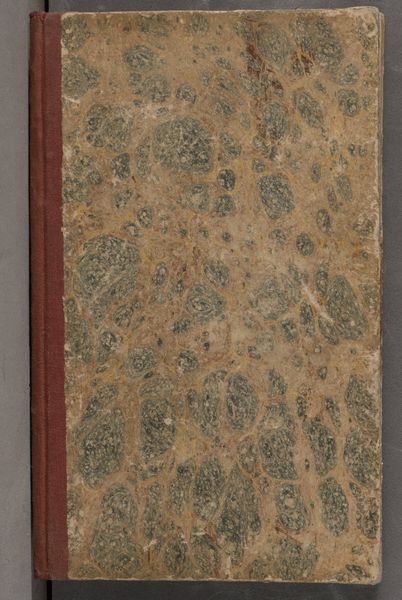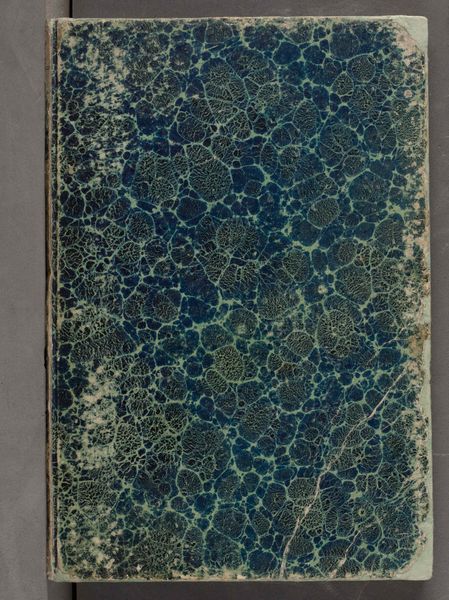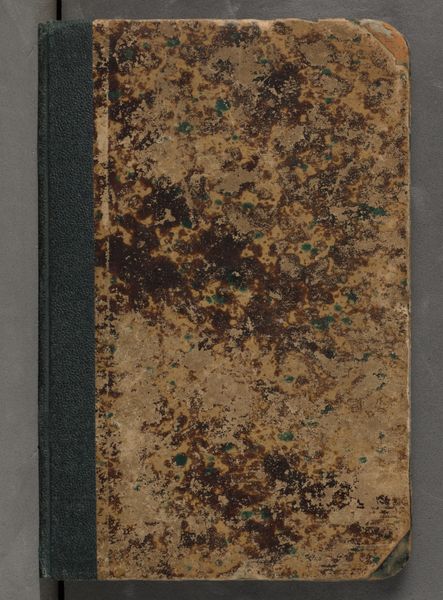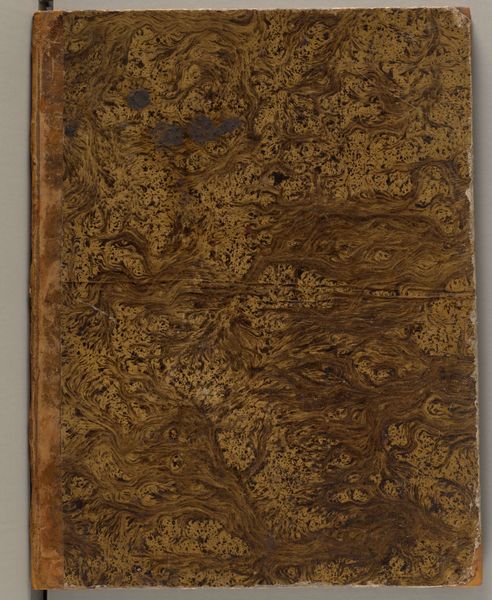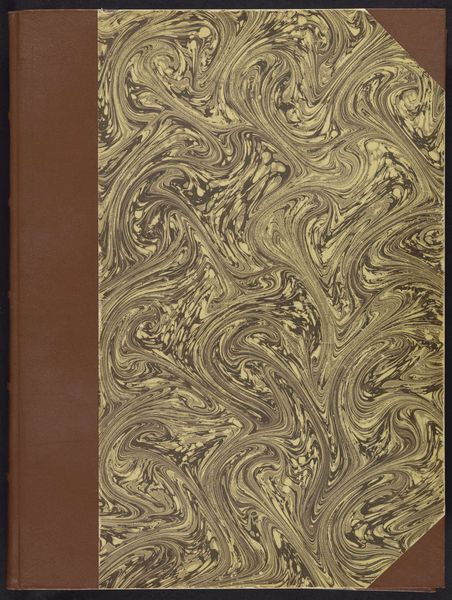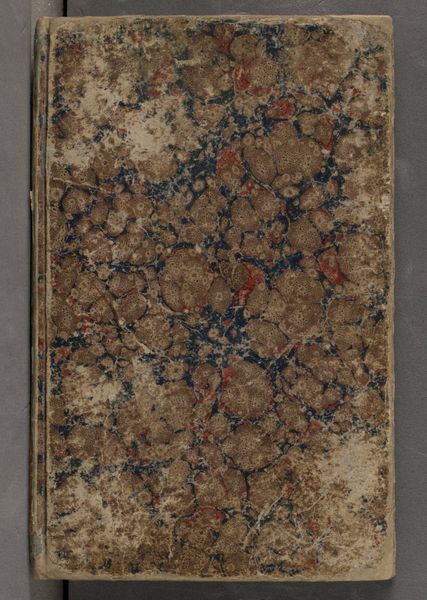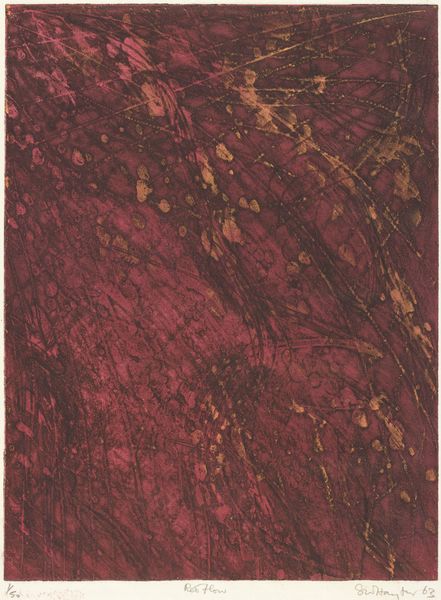
#
16_19th-century
#
organic pattern
#
repetition of pattern
Copyright: Public Domain
Editor: Here we have Ludwig Metz’s “Skizzenbuch” from 1839-1840, created with ink and Indian ink. The marbled cover creates this really cool swirling effect. What can you tell me about it? Curator: This "Skizzenbuch," or sketchbook, invites us to consider the social role of art in 19th-century Europe. Sketchbooks themselves become potent objects. They signified a move toward art being viewed less as formal commission and more as private reflection or as a tool for observation of everyday life. How does that inform your reading of the object? Editor: That makes a lot of sense. It feels less like a polished artwork and more like a personal journal where ideas are born, wouldn't you say? Curator: Precisely. Romanticism emphasized individual experience and the sublime in nature. The very act of carrying a sketchbook signaled participation in that movement, aligning the artist with a set of values that were, at the time, shaping cultural identity. Think about who was afforded the ability to carry and create a sketchbook and why? Editor: Hmmm… So, it’s not just a pretty pattern. Owning this sort of thing could have been seen as a statement, showing you're engaged with broader intellectual and social currents. Curator: Exactly. Consider who Ludwig Metz was, what artistic circles he moved in, and the broader context of artistic production at the time. What’s reflected about art's evolving role beyond just decoration? Editor: I never thought a simple sketchbook cover could hold so much history. It's not just about what's *inside*, but the statement it makes about the artist's identity. Curator: Precisely! It demonstrates how even an unassuming object can act as a window onto social values and the politics of artistic expression. Editor: So, I see it now, not as just a pretty cover, but an historical object carrying lots of messages about the art world.
Comments
stadelmuseum about 2 years ago
⋮
The sketchbook, used between winter 1839 and spring 1840, accompanied Ludwig Metz on trips to Höchst in Hessia. In addition to rather realistic depictions of the Church of Justinus, the castle or the medieval city wall, Metz also and above all recorded details of frieze ornaments, some of which he probably copied from master books or modelled after them. Unlike the architectural and city views captured in pencil, Metz did not date or label these ornamental studies. However, the artist coloured many of the precisely arranged frieze, tendril and palmette studies with a brush, and occasionally also drew them with a pen. They seem to fulfil the function of a sample collection and may have served Metz later as templates for his own works.For a full sketchbook description, please see “Research”
Join the conversation
Join millions of artists and users on Artera today and experience the ultimate creative platform.
